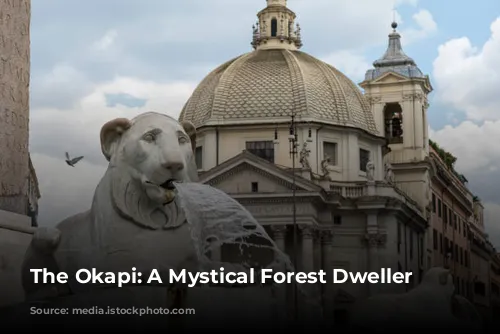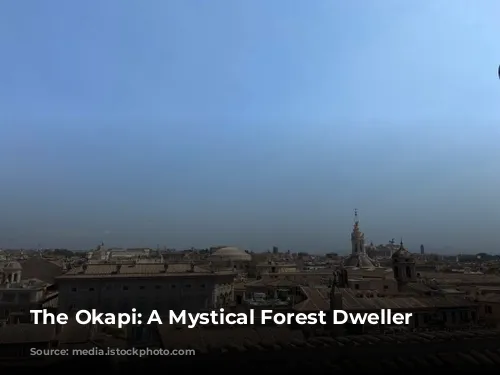Imagine a creature that blends the elegance of a giraffe with the grace of a deer, all while sporting stripes reminiscent of a zebra. This captivating animal is the okapi, a unique and elusive mammal that holds the title of the giraffe’s only living relative.

A Rare Jewel of the Rainforest
The okapi resides solely in the Ituri Rainforest of the Democratic Republic of Congo, where it thrives amidst the dense foliage. Its thick, oily fur acts as a natural raincoat, shielding it from the rainforest’s frequent downpours.
Adapting to the Jungle
The okapi’s brown and white stripes on its hindquarters offer remarkable camouflage, mimicking the dappled sunlight filtering through the canopy. These stripes help it seamlessly blend into its surroundings, making it incredibly difficult to spot.
Sensory Clues and Territorial Markings
The okapi’s short horns are covered in skin, except for the very tips. While all males sport these horns, most females possess knobby bumps instead. The okapi utilizes its scent glands located on the bottom of its hooves to leave behind distinctive territorial markings, indicating its presence to other okapis.
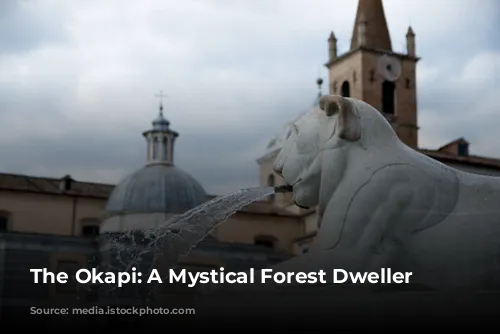
A Leaf-Loving Herbivore
The okapi is a strict herbivore, subsisting on a diet of fruits, buds, leaves, twigs, and other vegetation. Like its giraffe cousin, it possesses a long, dark tongue that allows it to reach and strip leaves from branches with remarkable dexterity.
Digestive Powerhouse
To efficiently digest its tough plant-based meals, the okapi, like giraffes and cows, boasts four stomachs. Its digestive system is a testament to its evolutionary adaptation to a plant-rich diet.
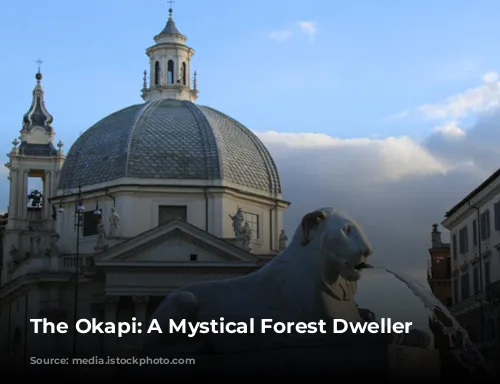
Solitary Habits and Social Interactions
The okapi is primarily a solitary creature, preferring to wander the rainforest on its own. However, occasionally, okapis will gather in small groups to feed, groom, and even play. These social interactions, although infrequent, highlight their capacity for bonding.

From Calf to Adulthood
Female okapis typically give birth to a single calf per pregnancy. The calf is able to walk just 30 minutes after birth, but a curious phenomenon occurs: it cannot defecate until it reaches the age of one month. This unusual delay ensures that the scent of feces doesn’t attract predators to the vulnerable young.
Silent Communication
While adult okapis generally remain silent, except when seeking a mate, calves communicate through bleats, coughs, and whistles. Mothers also use infrasounds, noises imperceptible to the human ear, to communicate with their young.
A Mother’s Devotion
Female okapis exhibit fierce protectiveness over their young. When faced with a threat, they will beat the ground with their hooves to warn off potential attackers. However, once a calf reaches six months of age, it must fend for itself in the harsh jungle environment.

Endangered by Humans
Despite its impressive adaptations, the okapi faces a significant threat: human activity. The International Union for Conservation of Nature (IUCN) has classified the okapi as endangered, highlighting the urgent need for conservation efforts.
Declining Populations
While the exact number of okapis remaining in the wild is unknown, estimates suggest that populations may have been halved over the past two decades.
Poaching and Habitat Loss
While the leopard is the okapi’s main predator in the wild, human hunters pose a far greater threat. Poachers continue to kill okapis for their meat and skin, while civil unrest in the Democratic Republic of Congo hampers wildlife protection efforts. Deforestation, driven by human activity, further fragments and destroys crucial okapi habitats.
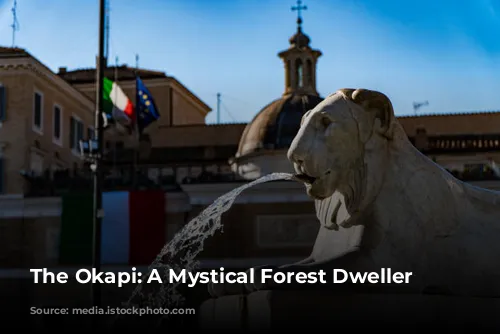
Hope for the Okapi
Despite these challenges, conservation efforts are ongoing. The Okapi Conservation Project, established in 1987, continues to protect this remarkable species. The project supports the Okapi Wildlife Reserve, a World Heritage Site located within the Ituri Forest, home to approximately 5,000 okapis.
Partnerships for Conservation
The Okapi Conservation Project collaborates with the Institute in Congo for the Conservation of Nature to provide resources to rangers who patrol the reserve and other okapi-occupied areas. These rangers play a vital role in deterring poachers and monitoring potential threats to okapi habitats.
Collaborative Efforts
The IUCN has joined forces with other organizations, including the Zoological Society of London, to implement a decade-long strategy aimed at curbing illegal activities that threaten the okapi’s existence.
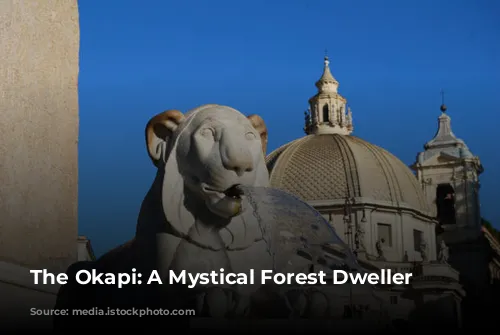
A Call for Action
The future of the okapi rests on the collective efforts of conservationists, local communities, and concerned individuals. By raising awareness about the challenges faced by this enigmatic creature, we can contribute to its survival and ensure that this fascinating animal continues to roam the forests of Congo for generations to come.
